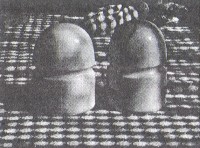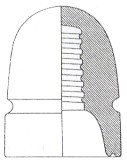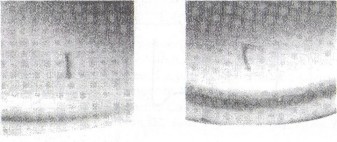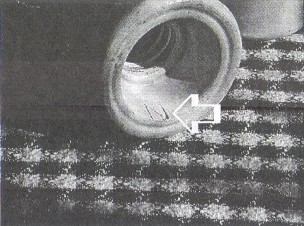Oh, Canada!
Reprinted from "Crown Jewels of the Wire", July 1998, page 27
With the discontinuation of the Canadian Insulator Collector Magazine, a
Canadian forum will be available here in Crown Jewels of the Wire. This forum
can be used as a question-and-answer format, to notify readers of Canadian
insulator events, or to present new finds or information. Correspondence can be
addressed to me Mark Lauckner, C-19 Bayview Drive, Mayne Island, BC VON-2JO
To start off this new forum, we have the reports of two interesting new
discoveries in Canadian beehive insulators. The first, submitted by Ken Pezzot
of Vancouver Island, BC, is an unmarked white porcelain insulator with the
typical 'Canadian railway' grooved base. This particular style is very similar
to the earlier Bullers beehives with the Bullers trademark stamped on the lower
skirt. The glaze on these items was quite thick and chunky. The later period
Bullers items show much higher quality porcelain and glaze, and have the
'Bullers' name incuse stamped on the skirt. The No-Name items pictured here are
of the same glaze typical of this early Bullers era in the imported Canadian
porcelain beehives. The Bullers-Jobson Co. 1895 catalog lists this style of
insulator as "Gisborne's Canadian" and clearly illustrates the grooved base. In my book
Canadian Railway
Communications Insulators 1880-1920, this unmarked style with the chunky thick
glaze is style 17-C. The odd feature of this item presented by Ken Pezzot is a
marking on the inner skirt.
 |

Style 17-C |

Bullers Inspection Stamps |

The letter "N" scratched into the inside skirt on the insulator.
Both insulators on the previous page had the same marking.
Many of the 17-A marked Bullers items had inspection or batch numbers stamped
into the skirt, but the unmarked style was just that, completely unmarked. The
marking pictured above appears to have been scratched into the soft clay, not
stamped in as with the marked Bullers items.
The next item, contributed by Richard Shea, West Bolton, Quebec, is the
typical MLOD Canadian Pacific which usually appears in light green. It is
referred to as type l-C in Canadian Railway Communications Insulators
1880-1920,
and has been found in 7 different molds, including the backward 'C', and an
unmarked version. Until recently, it has been noted with three different base
slopes.

Three base slopes on the Canadian Pacific...now there are four!


Now, thanks to the keen eye of Richard, it is now noted with a grooved base!
A warm welcome to Mark Lauckner who begins as editor of CJ's Canadian
insulator column. Research and the sharing of the history of Canadian insulators
has long been a passion for Mark. I encourage your questions and information be
sent to Mark for this new forum. A most informative. research article on the
Canadian Diamond CD 102 ponies by Mark Lauckner can be found in the June 1998
issue of Crown Jewels of the Wire beginning on page 25.
| 